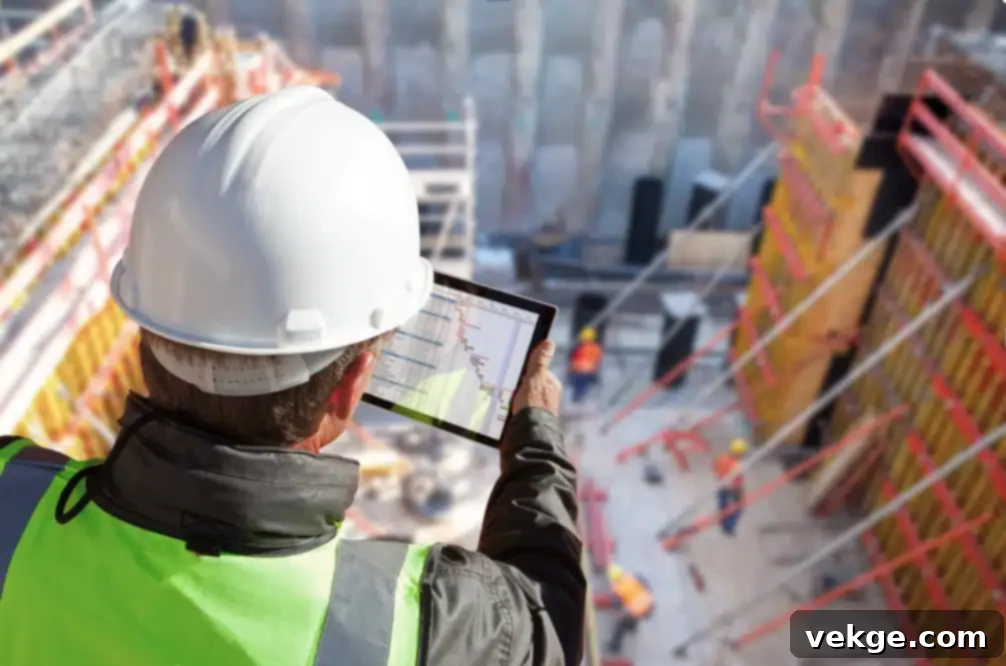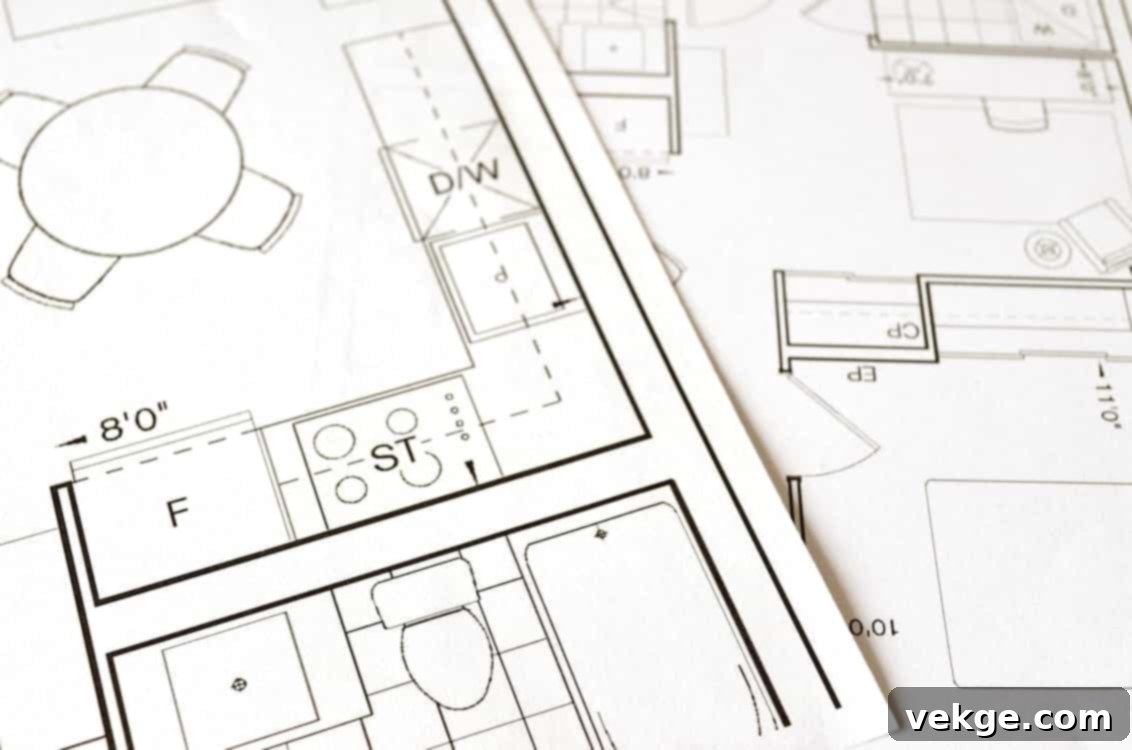Mastering Construction Project Management: Essential Strategies for Hassle-Free Success
Effective management is the cornerstone of any successful construction project. It encompasses far more than simply the coordination of labor and materials; it demands meticulous planning, highly streamlined processes, crystal-clear communication, and proactive problem-solving. In the dynamic and often complex world of construction, the ability to manage projects efficiently and effectively is what separates satisfactory outcomes from truly exceptional ones.
By consciously adopting and implementing key strategic principles, construction managers can not only meet their project goals and deadlines but consistently exceed expectations. This proactive approach ensures that projects progress smoothly, from the initial conceptualization phase right through to the final handover. This comprehensive guide delves into practical tips and essential strategies specifically designed to minimize disruptions, mitigate risks, and facilitate a genuinely hassle-free and profitable construction process for all stakeholders.
Rigorous Planning and Precise Scheduling: The Blueprint for Success
The absolute foundation of a hassle-free construction project lies in rigorous, detailed planning and precise scheduling. Before a single shovel breaks ground, a comprehensive project plan is not just advisable, but absolutely essential. This detailed blueprint should meticulously outline every single phase of the project, leaving no stone unturned.
Beyond merely specifying the quantity and type of materials required or the labor force needed, this plan must also map out an intricate timeline for each stage of construction. This includes defining clear milestones, establishing realistic deadlines, and allocating resources effectively. Utilizing advanced scheduling tools, such as Gantt charts or Critical Path Method (CPM) software, empowers managers to visualize the entire project timeline, identify critical tasks, and adjust dynamically to prevent costly bottlenecks before they occur. A well-organized and clearly communicated schedule ensures that all team members are not only aware of their specific roles but also understand their individual and collective deadlines, significantly reducing confusion, improving accountability, and boosting overall project efficiency. Furthermore, robust planning includes developing contingency plans for foreseeable and even some unforeseeable challenges, adding an essential layer of resilience to the project.
Streamlining Financial Transactions: Fueling Project Continuity

Financial management is an undeniably crucial element in maintaining the fiscal health and operational momentum of any construction project. Streamlined financial transactions are vital for ensuring that cash flow remains steady and predictable, which is critical for the timely payment of suppliers, subcontractors, and workers. Delays in payments can lead to strained relationships, work stoppages, and ultimately, project delays and increased costs.
Integrating modern financial tools and platforms, such as Hearth, can significantly enhance this critical aspect of project management. Such tools facilitate incredibly efficient payment processing by allowing clients to pay invoices securely via ACH (e-check), credit cards, or debit cards from virtually anywhere. This capability dramatically reduces the administrative time traditionally spent chasing down payments and greatly improves payment collection rates. Moreover, these digital solutions help in maintaining a clear, accurate, and easily auditable record of all financial transactions, ensuring transparency, continuity, and stability in the project’s financial structure. Beyond just payments, comprehensive financial management includes rigorous budgeting, real-time cost tracking, variance analysis, and accurate forecasting to keep the project on budget. Additionally, leveraging a digital assistant or dedicated software can automate invoicing, expense tracking, and payment collection processes, further streamlining the entire financial workflow and allowing managers to focus on core construction tasks.
Effective Communication: The Cornerstone of Collaboration
Clear, consistent, and continuous communication is the lifeblood of successful construction management. Effective communication strategies ensure that every single stakeholder, from the hands-on workers on site to the crucial project sponsors and clients, is exceptionally well-informed about the project’s progress, potential challenges, and any critical issues that may arise.
This involves establishing robust channels for regular updates through structured meetings, intuitive digital collaboration tools, and comprehensive progress reports that keep everyone aligned on the project goals, timelines, and budgets. Utilizing a meeting agenda template can significantly help structure these discussions, ensuring that all key topics are covered efficiently, consistently, and documented properly. Good communication serves as a powerful preventative measure against misunderstandings, misinterpretations, and costly errors, which can quickly lead to significant delays and increased expenses if not managed proactively. It also fosters a collaborative environment, encouraging team members to voice concerns and contribute solutions, thereby enhancing problem-solving capabilities and overall team cohesion. Open lines of communication extend to external parties like regulatory bodies and local communities, ensuring smooth interactions and mitigating potential public relations issues.
Leveraging Technology: Driving Efficiency and Innovation
Adopting and strategically implementing the right technology can profoundly enhance the efficiency, accuracy, and safety of construction projects. The modern construction landscape is increasingly digitized, offering a multitude of tools designed to simplify complex processes.
Tools such as advanced project management software provide real-time updates, powerful data analytics, and integrated dashboards, enabling managers to make informed, data-driven decisions swiftly. This software can centralize documentation, track progress against baselines, and manage resources efficiently. Similarly, when managing vital client relationships, it is paramount to utilize robust CRM (Customer Relationship Management) software that significantly eases the administrative workload. For specialized trades like roofing, for example, it’s crucial to choose a roofing CRM software that helps streamline communication, track leads, manage customer interactions, and automate follow-ups, ensuring a smooth workflow from initial contact to project completion and beyond.
Embracing these cutting-edge technological solutions helps construction managers maintain a holistic, bird’s-eye view of the entire project, ensuring that each component is executed according to plan, with optimized resources and reduced risks, ultimately leading to higher quality and more predictable outcomes.
Proactive Risk Assessment and Management: Building Resilience

Proactive risk management is an absolute imperative for running a truly hassle-free construction project. Identifying potential risks at the very outset of a project allows for the development of effective, strategic measures to mitigate or completely avoid them. Risks in construction are diverse and can span various categories.
These can include critical safety risks to personnel (e.g., accidents, falls), environmental risks (e.g., hazardous material exposure, unforeseen geological conditions), financial risks (e.g., budget overruns, market fluctuations), operational risks (e.g., equipment breakdown, material shortages), and project-specific risks such as significant delays due to unforeseen weather conditions or subcontractor performance issues. Implementing a robust risk management framework involves several steps: risk identification through brainstorming and checklists, qualitative and quantitative risk analysis to assess probability and impact, developing response strategies (avoidance, mitigation, transfer through insurance, or acceptance with contingency plans), and continuous monitoring throughout the project lifecycle. Regular risk assessments, coupled with the implementation of robust safety protocols and comprehensive insurance coverage, can prevent accidents, ensure compliance with all relevant regulations, protect the project’s financial health, and ultimately keep the project on track and within legal and ethical boundaries. Building a culture of safety and risk awareness among all team members is also crucial for minimizing incidents and fostering a secure working environment.
Legal and Regulatory Compliance: Navigating the Complex Landscape
Compliance with a myriad of legal and regulatory requirements is non-negotiable for any construction project. Construction managers must stay thoroughly abreast of all local, state, and federal laws and ordinances that specifically affect their projects. This extensive scope includes securing all necessary permits and licenses before commencement, adhering to zoning laws, and ensuring that all building codes (e.g., International Building Code, local amendments), environmental regulations, and labor laws are followed meticulously at every stage.
The consequences of non-compliance can be severe, ranging from hefty fines and stop-work orders to significant legal liabilities, project delays, and lasting damage to a company’s reputation. To circumvent these pitfalls, regular training sessions for the entire team on compliance matters, including safety protocols and ethical conduct, are paramount. Engaging legal counsel specializing in construction law from the project’s inception can provide invaluable guidance. Moreover, meticulous documentation of all permits, inspections, and compliance efforts is essential for demonstrating due diligence and defending against potential claims. Staying compliant not only avoids legal penalties and fosters trust but also inherently ensures that the project adheres to the highest safety and quality standards, thereby protecting workers, the public, and the eventual occupants of the building or infrastructure being constructed.
Team Leadership and Development: Empowering the Workforce
Effective team leadership is a critical catalyst for the success of construction projects. A strong, visionary leader can inspire, motivate, and guide the team, ensuring that all members are working cohesively towards the same overarching goals with a clear understanding of their individual roles and collective responsibilities. Leadership extends beyond simply giving orders; it involves fostering a positive work environment, promoting accountability, and encouraging innovation.
It’s imperative for construction managers to provide continuous personal and professional development opportunities for their team members. This could encompass offering training in new technologies (e.g., BIM software, drone operation), advanced construction techniques, updated safety protocols, and essential soft skills such as communication, problem-solving, and conflict resolution. Investing in your team’s growth not only significantly boosts morale and retention but also enhances productivity, improves the quality of work produced, and builds a more skilled and adaptable workforce capable of tackling future challenges. Recognizing and rewarding good performance, providing constructive feedback, and empowering team members to take ownership of their tasks are also vital components of effective leadership and team development, cultivating a culture of excellence and continuous improvement.
Client Engagement and Feedback: Nurturing Trust and Satisfaction

Building and maintaining a strong, transparent relationship with clients is another pivotal element of running a smooth and successful construction project. Trust and satisfaction are built through consistent, transparent communication about the progress of the project, including regular updates, detailed reports, and scheduled meetings. This proactive approach helps manage client expectations and keeps them informed every step of the way.
Actively encouraging feedback from clients and being highly responsive to their needs, concerns, and suggestions can lead to more effective project outcomes and significantly help avoid misunderstandings, scope creep, and last-minute changes that could otherwise cause costly delays and rework. Establishing clear channels for feedback, implementing a structured change order process for any modifications requested, and demonstrating flexibility where feasible are essential practices. Treating clients as integral partners in the project fosters a collaborative environment, ensures their vision is realized, and ultimately leads to higher client satisfaction and positive referrals. A truly engaged client is often a more understanding and supportive client when minor challenges inevitably arise.
Continuous Improvement: Evolving for Future Success
In the dynamic and ever-evolving world of construction, there is always considerable room for improvement. Truly successful construction managers are those who actively seek feedback not only from clients but also, and perhaps even more critically, from their internal teams regarding what strategies and processes work effectively and which ones fall short. This reflective practice is fundamental to long-term success.
This invaluable feedback can be instrumental in refining existing processes, implementing innovative changes, and adopting new methodologies that lead to demonstrably better efficiency and effectiveness in future projects. Continuous learning from the completion of each project, through structured “lessons learned” sessions, is paramount. Additionally, staying abreast of emerging industry trends, research into new materials and technologies, and adopting innovative practices (such as Lean Construction principles or Agile project management adapted for construction) are all crucial for maintaining a competitive edge and consistently improving project delivery over time. Fostering a culture of continuous improvement encourages experimentation, learning from failures, and celebrating successes, ultimately driving the organization forward and building a stronger, more resilient operational framework.
Embracing Sustainability Practices in Construction: Building a Greener Future
Implementing sustainable practices is becoming an increasingly vital and integral component of modern construction. Beyond being a trend, it represents a fundamental shift towards more responsible and efficient building. Utilizing environmentally friendly materials, adopting energy-efficient designs, and employing methods that minimize ecological impact can significantly reduce the project’s environmental footprint. These practices often lead to substantial long-term cost savings for clients through reduced energy consumption and lower maintenance requirements.
Moreover, sustainable construction practices are frequently transitioning from optional best practices to legal and regulatory requirements in many jurisdictions, driven by global climate goals and local environmental mandates. Construction managers must therefore develop a deep understanding of these practices and proactively implement them, not only to meet regulatory requirements and avoid penalties but also to appeal to a broader market that increasingly values environmental responsibility and corporate social governance. This includes focusing on aspects like material sourcing (recycled content, local procurement, low VOC materials), waste reduction and recycling on-site, water conservation strategies, renewable energy integration (solar panels, geothermal), and designing for energy efficiency. Embracing sustainability enhances a company’s brand reputation, contributes to a healthier planet, and future-proofs construction businesses in an increasingly environmentally conscious world.
In conclusion, managing a construction project smoothly, efficiently, and successfully requires a sophisticated blend of strategic foresight, robust planning, meticulous execution, transparent communication, and an unwavering commitment to continuous improvement. By diligently focusing on these key strategies—from rigorous planning and streamlined financial management to leveraging cutting-edge technology, proactively managing risks, ensuring strict compliance, nurturing strong leadership, engaging clients effectively, and embracing sustainable practices—construction managers can ensure their projects are not only successful but also compliant, highly efficient, and delivered to the utmost satisfaction of all stakeholders involved. Effective, holistic project management ultimately leads to safer, more productive construction sites and, most importantly, results in the delivery of high-quality buildings and infrastructure that stand the test of time and contribute positively to communities.
